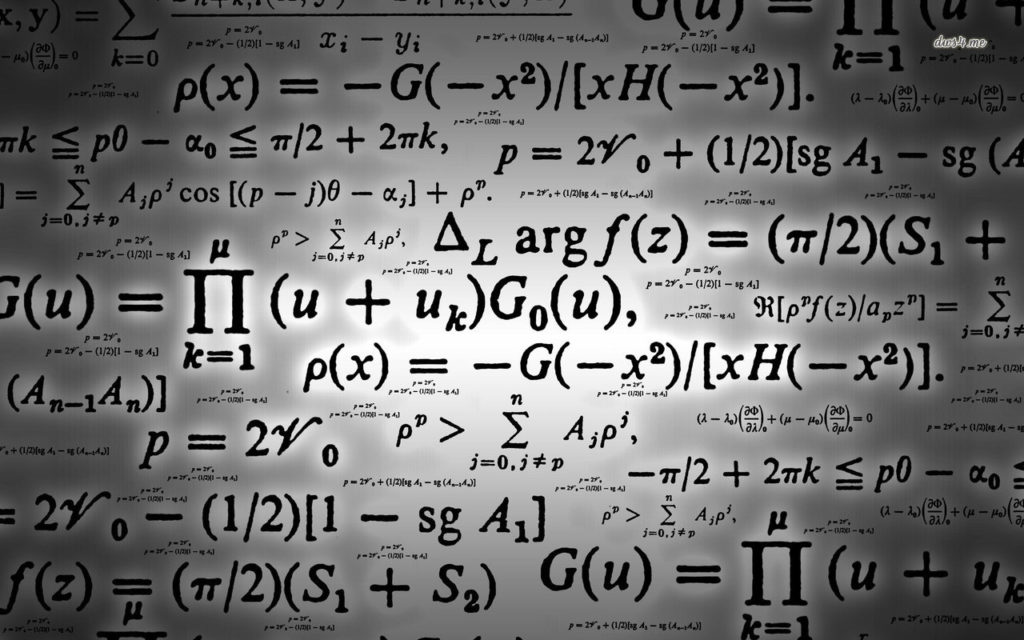Are equations beautiful? Does a mathematician see the machine code of the universe in the complex language they use? Does a Chemist see the flow of matter? Does a Biologist see the evolution of life? Does a physicist see the probabilistic nature of electrons? Many scientists would affirm their view that the equations that dictate their respective fields are artistic, in addition to logical. So if equations can be beautiful, what is the most beautiful equation?
Naturally, the most beautiful equation should be simple. It should be somewhat intuitive, yet surprising in it’s result. It should explain something fundamental about the universe, while having an application that is relevant.
There is one equation in my mind that fits this criteria perfectly.
E = MC2
Einstein’s famous equation is, in my own opinion, the most beautiful equation. In a less mathematical form is is the concept that matter and energy are one and the same, that energy can be converted into mass, and mass can be annihilated into an incredible amount of pure energy. Why should the scaling factor be the speed of light squared? Why not just Energy = Mass? Such a strange equation, yet fundamental to the existence of everything in the universe. Here’s Why:

1. Without it, there is no matter
No matter. Period. This also means no stars, no planets, no water, no life, nothing but a universe full of light. The equation governs the formation of the first protons and neutrons from the energetic soup of the early universe. With the collision of high energy photons, the particles that fill the universe formed.
In the absence of Einstein’s equation, we have a Universe that slowly grows, with a bunch of photons puttering around and bouncing off each other occasionally. The expansion of space would stretch these photons into the cosmic microwave background radiation, but that’s all the universe would contain. It would be a universe full of annoying static.
2. Even with Matter, there would be no stars
Even if the universe started out with Hydrogen and Helium, the way it looked around 50 Million years into its existence, no stars could actually form. The matter would clump together under the influence of gravity, forming hugely massive clouds that would produce huge pressure and temperature. Let’s say that if we take the simple formula E = M instead of adding the scaling factor, we could possibly still have fusion. However, the fusion of Hydrogen into Helium would not produce energy to become a self-sustaining process. You would have to keep adding more mass to a clump to keep the pressure and temperature high enough to fuse atoms, but eventually the mass would get so high that you would end up with a black hole, swallowing up what little heavy elements were formed.
No heavy elements means nothing but Hydrogen and Helium clumps would dominate the universe. They could grow massive enough to form black holes or stay small enough to travel around the universe as warm protostars, radiating in infrared from the release of gravitational potential energy. This would make for a pretty dull universe.
A Caveat: This is an imaginary leap of what might happen if we had some strange universe without Einstein’s equation, assuming E = M instead. Of course there would be no one in it to actually study how it would evolve, so we leave it to an exercise of imagination.
We need this equation in it’s beautiful form to make Fusion a self-sustaining process, so that all the heavy elements of the universe can be produced. We also need the release of fusion energy to keep a star stable, until it runs out of fuel and explodes as a supernova, allowing the cosmos to become seeded with the heavy elements that form the planets and subsequently all life on the Earth.
3. No Hydrogen Bombs
The reason that a Hydrogen bomb is so powerful is because of E = mc2. A tiny bit of mass is converted into pure energy within the bomb, and the energy released is 9,000,000,000,000,000,000 times the amount of mass (scaling only, ignoring the units). Without the equation, perhaps one could still produce a bomb where fusion happens (let’s again say E = M), but it would be a dud, releasing no energy and only causing death in the event it was sufficiently heavy and landed on someone’s head.
The lack of Hydrogen bombs would be a good thing. No release of energy in fusion means there would be no possibility of creating such a super weapon, but then it of course follows that there are no stars and no humans to make the bomb in the first place either.
Important and Beautiful
The mass-energy equivalence is simple and elegant, yet it yields the complexities of the universe, from the basic formation of the heavy elements, to the light that paints the cosmic portrait of stars and galaxies. For it’s importance in the evolution of our universe, it is elegantly concise, easy to understand, and timeless in its relevance.
Imagine how little was understood before we realized the true impact of Einstein’s discovery. How we could not understand what happens within a star, or how the universe began. How heavy elements grew and seeded the Universe. It filled a gap in human knowledge.
E = mc2 can be debated as the most beautiful equation, and I’m always open to suggestions, but if Einstein was still here, and able to give his opinion to those who disagree, he might have the following response:



That is only true if and only if p (momentum) is zero.
The real equation is E²=(mc²)²+(pc)²
Also, if what you’re examining happens to be massless like a Photon or Gluon you get E=(pc)